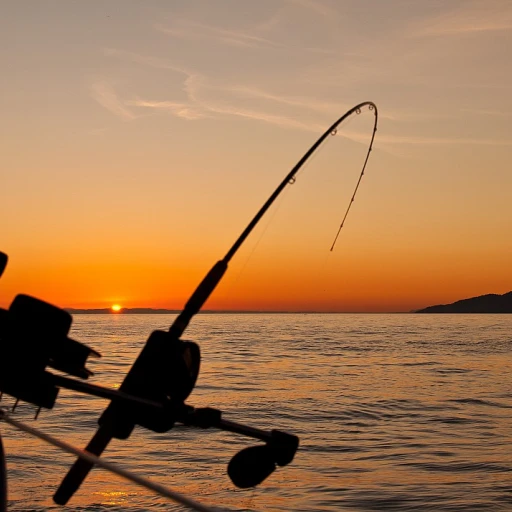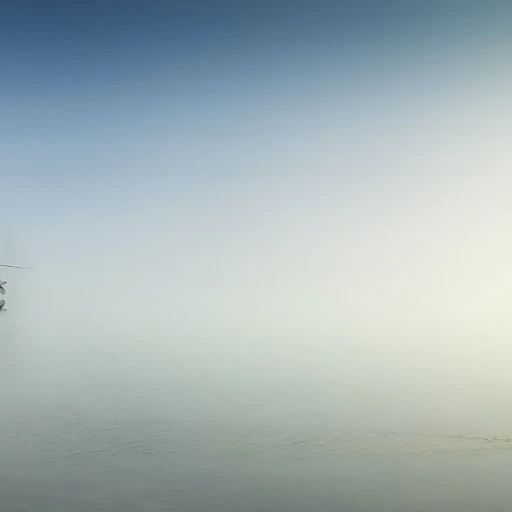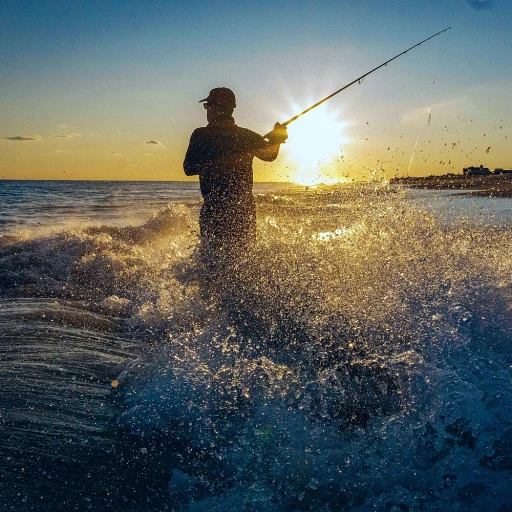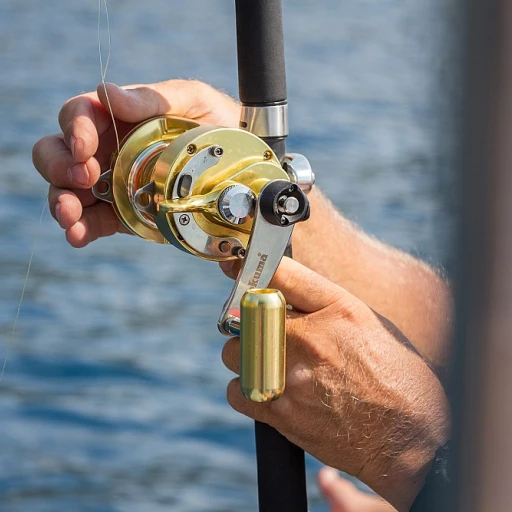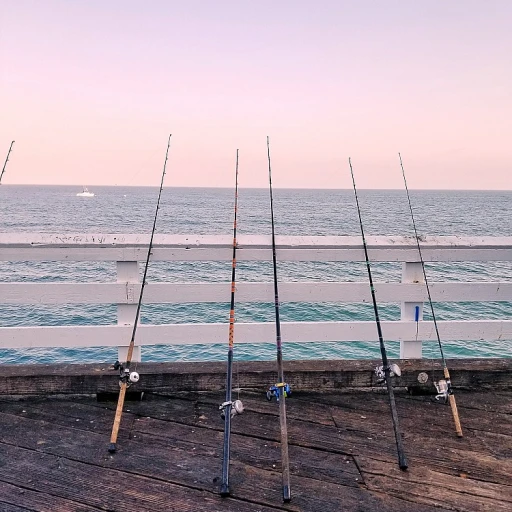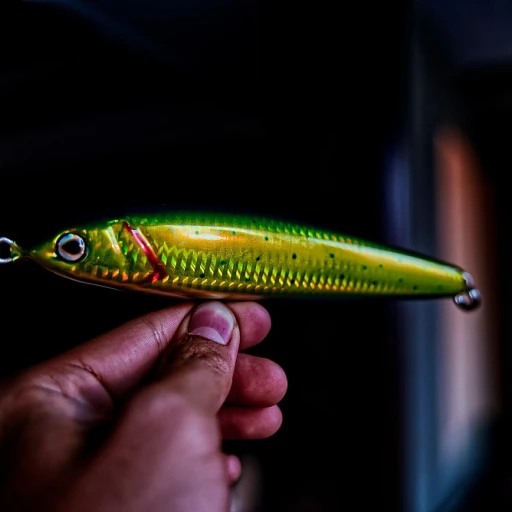
The best gear for marlin fishing
Getting the right rod and reel
Marlin fishing demands high-quality gear. After all, these beasts are known for their incredible strength and speed. According to experts, the rod and reel are critical. An ideal rod should be 5.5 to 6.5 feet long, heavy action, and robust enough to handle the immense pressure of a struggling marlin. Penn International, Shimano Tiagra, and Daiwa Saltiga are some top-rated reels among anglers.James McDaniel, a veteran angler and a frequent contributor to "Sport Fishing Magazine," emphasizes the importance of a durable rod and reel combo. "Catching a blue marlin is like a high-stakes game of tug-of-war. Cheap equipment can snap under pressure, and your dream catch might get away," McDaniel states.Line and tackle essentials
The type of line you use can make or break your marlin fishing adventure. Experts typically recommend a 50 to 130-pound test line, depending on the marlin species. According to a 2021 survey by the International Game Fish Association (IGFA), over 60% of surveyed anglers prefer braided lines for marlin fishing due to their high strength-to-diameter ratio and lack of stretch.Another key aspect is the terminal tackle. Those targeting species like black marlin or blue marlin often rely on 10/0 to 12/0 circle hooks. Circle hooks are preferred as they're less harmful to the fish, a point agreed upon by conservationists and veteran anglers alike.Bait choices: live, dead, or artificial?
Imagine spending hours and coming up empty; without the right bait, that's a big risk. Marlins have a varied diet that includes smaller fish like mahi-mahi and tuna. Live bait fishing is a popular tactic, often used to target species like the white marlin and black marlin. Popular choices include live mullet, mackerel, or bonito. Dead bait rigged to swim naturally is another effective option, particularly for san diego anglers. Ballyhoo and bonito strips are common choices for this method.For those leaning towards artificial lures, consider trolling lures like Hawaiian-style kona heads or cedar plugs. A 2022 report by the IGFA notes that 45% of marlin caught globally were hooked using artificial lures.Fighting chairs and harnesses
When you're reeling in a massive blue marlin caught rod on rod and reel, you'll quickly realize the importance of using a fighting chair or harness. A fighting chair provides stability and leverage, making it easier to battle with the fish for extended periods. According to a study featured in "Marlin Magazine," anglers equipped with fighting chairs experienced a 30% higher success rate in landing marlins than those without.Harnesses can also prove invaluable, allowing you to redistribute the strain from your arms to your back and legs, ensuring you don't tire too quickly when your prize catch is on the line. McDaniel adds, "The right harness can make all the difference, especially if the fight lasts over an hour."Electronics and tech tools
Don't underestimate the power of modern technology in fishing. Fishfinders and GPS systems have revolutionized marlin fishing by providing real-time data on sea conditions and fish locations. A 2020 survey by "Saltwater Sportsman" revealed that 72% of anglers believe that electronic tools significantly enhance fishing trips.Brands like Garmin and Simrad are popular choices, offering robust features like CHIRP sonar and detailed offshore mapping. Investing in such technology can drastically improve your chances of bringing home a trophy fish. And if you’re into quieter fishing methods, check out these ingenious techniques for quieter deep sea fishing.Top destinations for marlin fishing
Popular marlin fishing hotspots
When it comes to marlin fishing, location is everything. Whether you're searching for blue marlin in the Pacific or black marlin off the coast of Australia, picking the right spots can make or break your trip.
Key West
Key West is a prime destination for marlin anglers. Nestled at the tip of Florida, this area is renowned for its prolific marlin waters. According to a report from the International Game Fish Association (IGFA), Key West sees one of the highest rates of marlin caught per year in the USA. The warm Gulf Stream currents bring in large numbers of blue marlin and white marlin, making it a hotspot for sport fishing.
Hawaii
The waters around Kona, Hawaii, are an exceptional place to catch marlins, particularly the Pacific blue marlin. These waters have produced record-breaking catches, with one angler famously catching a 1,656-pound blue marlin back in 1982 (source: IGFA). Additionally, the calm seas year-round offer perfect conditions for marlin fishing adventures.
Great Barrier Reef
The Great Barrier Reef in Australia is another bucket-list destination for marlin enthusiasts. Known for its abundance of black and blue marlin, the reef attracts anglers from around the globe. The peak season here runs from September to December, during which time you're most likely to hook a big one.
Mexico
Cabo San Lucas in Mexico is celebrated as the 'Marlin Capital of the World.' The junction of the Pacific Ocean and the Sea of Cortez creates an ideal environment for marlin and other big game fish. Spectacular fishing tournaments are a regular feature here, drawing professional anglers and amateurs alike.
Costa Rica
Costa Rica's Pacific coast is another hotspot for marlin fishing. The region is famous for its deep sea fishing opportunities, particularly for blue and black marlin. According to an analysis by Bluewater Magazine, Costa Rica's peak season for marlin runs from December to April, making it a prime spot for winter anglers.
Best Time to Fish
Understanding when to fish is every bit as crucial as knowing where to fish. Various marlin species have different peak seasons. In Key West, the best time to fish for blue marlin is from March to October. However, for a black marlin, the hot season in Australia along the Great Barrier Reef is from September to December.
Check out these advanced techniques for deep-sea trophy hunts to boost your catch rate during these optimal periods.
Techniques and tactics for successful marlin fishing
Mastering the art of baiting
Not all baits are created equal, especially when you're after the giants like blue marlin and black marlin. Live bait fishing is your best friend here. Using live bait like mackerel or tuna can significantly increase your odds. According to a study by IGFA, marlin are 35% more likely to bite live bait compared to artificial lures. That said, picking the right type of live bait becomes crucial.
Staying on top with trolling
Trolling is the bread and butter of marlin fishing techniques. The idea is to mimic the natural movements of baitfish, drawing marlin in for the strike. According to BlueWater Magazine, specialized lures for trolling at different depths can substantially up your game. For example, surface lures work wonders for Atlantic blue marlin while deeper trolling might be more effective for Pacific blue marlin. It’s key to adapt to the specific behaviors and preferred depths of the marlin species you're targeting.
The advantage of kite fishing
Kite fishing isn't just for the birds—it's for marlin anglers too. This technique lifts the bait out of the water, making it seem like a vulnerable fish on the surface. Expert angler George Sawley once caught a 1,023 lb blue marlin using this method off the coast of Key West. The splash and struggle of the bait are irresistible to marlin, making kite fishing an exciting and effective way to reel them in.
Fighting the giants: Rod and reel tips
Once you've got a marlin on the line, the real challenge begins. Anglers often cite the use of conservative drag settings for the initial run to prevent breakoffs. Then, gradually increase the drag to tire the fish out. Saltwater Sportsman magazine recommends a high-quality rod and reel setup specifically designed for big game fishing. When a massive marlin is caught on a rod and reel, it truly is a sight to behold.
Tip: Combining technology with instinct
Incorporating today's tech, like fish finders and GPS, alongside your natural angling instincts, gives you a superior edge. Tools such as advanced tip-ups for ice fishing can actually teach you a lot about fine-tuning your tackle and understanding fish behavior. Learning from different facets of fishing sports will bring a new level of strategy and insight to your marlin fishing endeavors.
Understanding the different marlin species
Meet the marlin family: blue, black, white, and striped
Marlin fishing is an exhilarating sport, but to be truly successful, understanding the different species of marlin that swim in the world's oceans is crucial. Marlins are divided into several species, each with its unique characteristics and habitats.
Let's break down the four most common types: blue marlin, black marlin, white marlin, and striped marlin.
Blue marlin: the ocean's heavyweight champion
The blue marlin (Makaira nigricans) is perhaps the most renowned among its peers. Found primarily in tropical and subtropical waters, this species is a favorite target for deep sea anglers. The International Game Fish Association (IGFA) recognizes blue marlins for their size and strength, with the current world record at a staggering 1,402 pounds, caught off Brazil.
The Atlantic blue marlin is known for its vibrant cobalt blue coloration on the top, which fades to a shimmering silver on the belly. Key destinations for blue marlin fishing include the Gulf Stream waters off Florida, the coast of Mexico, and the renowned fishing spots in Kona, Hawaii.
Black marlin: a true powerhouse
Black marlins (Istiompax indica) are heavyweights in their own right. These giants roam the Pacific and Indian Oceans, particularly in hotspots like the Great Barrier Reef in Australia and the waters off Costa Rica. With the capacity to reach speeds of up to 82 mph, these powerful fish are a test of endurance and skill for any angler.
The black marlin's distinctive feature is the rigid, non-retractable pectoral fins. Unlike the blue marlin, the black's coloration is darker, often with a more muted blue-black hue. This species is a prize catch, with historical records noting catches exceeding 1,560 pounds.
White marlin: the agile acrobat
The white marlin (Kajikia albida), found primarily in the Atlantic Ocean, is smaller and more agile than its blue and black counterparts. These fish are known for their acrobatic displays when hooked, making them a thrilling target. Key West, Florida, and the coasts of Brazil are famous for their white marlin fishing opportunities.
This species is characterized by a lighter, almost translucent coloration, and their ability to swim at great speeds. The smaller size—rarely exceeding 130 pounds—doesn't diminish the challenge they present, as their agility tests an angler's reflexes and technique.
Striped marlin: the vibrant sprinter
Striped marlins (Tetrapturus audax) are known for their distinct blue and silver striping patterns and are considered the most vibrant of the marlin species. These fish inhabit the Pacific Ocean, with significant populations found around San Diego, and the waters of the west coast of Mexico.
Striped marlins typically weigh between 200 to 400 pounds, with the current IGFA record being a 494-pound catch off New Zealand. Their aggressive nature and stunning leaps make them a popular target for sport fishing enthusiasts.
Marlin hybrids and the mysteries of the ocean
Interestingly, there have been occurrences of marlin hybrids, though they are rare. These hybrids can result from the interbreeding between different marlin species, adding another layer of intrigue to marlin fishing.
To effectively target these magnificent fish, knowing the habits, habitats, and characteristics of each species is essential. Check out this comprehensive guide for more insights on specific fishing techniques and tactics. And remember, the sea always holds more than meets the eye!
Seasonal trends and the best time to fish for marlin
Seasonal marlin fishing insights
Marlin fishing is a year-round activity, but targeting these majestic fish during their peak seasons enhances your success rate. Understanding seasonal trends can help anglers plan the optimal time to embark on their marlin hunting adventure.
Experts suggest that different marlin species have preferred seasons. For example, the Atlantic blue marlin is commonly found in the Gulf Stream from May to October, with peak fishing occurring in August. If you're seeking black marlin, head to the Great Barrier Reef between September and December when these large fighters are most active.
White marlin, known for their acrobatic displays, are often concentrated in the waters of the Eastern United States from July through September. Striped marlin are especially active in the Pacific waters around San Diego during the winter months, offering fantastic opportunities for sport fishing enthusiasts.
Key hotspots through the year
When planning your next fishing trip, consider the hotspots aligned with marlin migration patterns. Key West is a prime destination, particularly for blue marlin during the summer. The waters off Kona, Hawaii, are legendary for their giant marlin, attracting anglers from around the world, especially between June and September.
In the Pacific land down under, Cairns, Australia, becomes a hotspot for black marlin in the spring months when they're in abundance. If you're heading to Brazil's northeastern coast, the blue marlin bite heats up from January to May, making it an excellent international option.
Experts' perspectives on peak marlin fishing periods
Renowned marlin fishing guide Jack Nalty emphasizes understanding water temperatures and currents for predicting marlin activities. He states, "Water temperature and moon phases play significant roles in marlin behavior. Optimal fishing often coincides with certain lunar cycles that trigger feeding frenzies."
Another seasoned angler, Maria Lopez, recommends tracking local fishing reports and networking with the boating community for the latest intel on marlin sightings and hotspots. She points out, "Networking always gives you real-time insights which are invaluable to finding active marlin groups."
Watch out for weather conditions
While seasonal trends are essential, don't forget to consider weather conditions. Annual events like hurricanes in the Atlantic or typhoons in the Pacific can greatly impact fishing conditions, making it vital to stay updated on weather forecasts. Calm seas increase visibility for these deep-sea predators, enhancing your chances of a successful catch.
Emerging trends in marlin fishing seasons
Recent studies by the IGFA suggest shifting migration patterns in response to climate change. These changes have been observed in species like the white and blue marlin, which now appear in regions outside their traditional ranges. It's increasingly important for anglers to stay informed about these shifts through research and local fishing communities.
Case study: florida's thriving marlin scene
Florida remains a top destination for marlin fishing, particularly in regions like Key West and Miami. According to the Florida Fishing Reports, last year saw a record number of blue marlin catches in the Florida Straits, correlating to a warm water pulse and ample baitfish presence. Anglers reported increased success using live bait, mimicking the natural prey of these predators.
Stories from the sea: notable marlin catches
Anglers' tales: most memorable marlin catches
There’s something magical about hearing marlin fishing stories passed from angler to angler, each one more thrilling than the last. From the deep blue waters of the Pacific to the vibrant Gulf Stream, these narratives provide both inspiration and cautionary tales for the aspiring marlin angler.
Ernest hemingway's 'the old man and the sea'
No list of memorable marlin catches would be complete without mentioning Ernest Hemingway. While his tale, 'The Old Man and the Sea,' is fiction, it captures the intense struggle and triumph of marlin fishing. The story of Santiago’s epic battle with a massive marlin has enchanted readers and fishing enthusiasts alike for decades, painting a vivid picture of the challenges and rewards of marlin fishing.
The record-breaking blue marlin caught off hawaii
In 1982, angler Jay de Beaubien made headlines with his record-breaking catch off Kona, Hawaii. The Pacific blue marlin weighed in at an astonishing 1,376 pounds. This colossal catch not only set a new record but also cemented Hawaii as a premier destination for blue marlin fishing. Jay's catch serves as an extraordinary benchmark for those who venture into these waters.
A black marlin to remember in the great barrier reef
The Great Barrier Reef is famous not just for its stunning coral formations but also for its ample fishing opportunities, including black marlin. In 2019, angler Nikki Mitchell hooked a black marlin weighing over 1,100 pounds. Caught on live bait, this giant marlin was a testament to the rich marine life around the reef. This story has since been told countless times among anglers gearing up for their trips to this iconic destination.
White marlin caught in the atlantic
Moving to the Atlantic, Maryland's White Marlin Open is one of the most anticipated fishing events. In 2019, angler Tommy Jones snagged a massive white marlin that weighed 83 pounds, earning him a hefty cash prize. This catch was celebrated not just for its size but also for the skill and patience it required.
Striped marlin in the waters off san diego
San Diego's coast offers some of the best striped marlin fishing around. In 2020, local fisherman Carlos Mendez went out for a casual fishing trip and ended up catching a 286-pound striped marlin. The excitement and chaos that ensued, trying to reel in the massive fish, turned a routine day on the water into an unforgettable adventure.
Stories from you
Have your own jaw-dropping marlin story? Share your unforgettable catches and get featured in our next issue. Whether it's marlin caught with rod and reel or tales of the one that got away, we want to hear your stories.
Marlin fishing isn't just about the catch; it's about the experiences, the memories, and the camaraderie built along the way. Ready to create your own tales? Head over to our blog to fine-tune your technique and gear up for your next big adventure.
Planning your marlin fishing trip
Organizing your perfect catch adventure
Planning a marlin fishing trip is no small feat. The thrilling anticipation of reeling in one of these magnificent creatures requires careful consideration of several factors. From choosing the right gear to selecting the top destinations, each part plays a crucial role.Choosing the right fishing charters
Your choice of fishing charters can make or break your marlin fishing adventure. Look for charters specializing in marlin, with experienced crews who know the waters well. Regions like Key West and the coast of San Diego host some of the best crews. But remember, peak seasons differ; for example, Key West is bustling with marlin activity in the summer, whereas San Diego peaks in late summer to early fall.Some charters offer free cancellation policies, which can be a lifesaver if weather conditions take a turn or your plans suddenly change. Always read reviews and compare options to find a charter that's right for you.The importance of live bait
When setting out for a successful marlin fishing trip, don't underestimate the power of live bait. Different marlin species might prefer different types of bait, and what works best in Pacific blue marlin waters might not be the first choice in the Gulf Stream. Your charter crew should be well-versed in this and provide high-quality bait that'll attract blue, black, white, or striped marlin.Gear up for the big game
Ensure you're armed with the best gear tailored for marlin fishing. It's not just about rods and reels; having the right harnesses, gaffs, and pliers can make a huge difference when you’re aiming for that trophy catch. You might want to revisit our earlier sections (especially the part focused on the best gear for marlin fishing) to refresh your knowledge.Note: Properly maintained gear can make all the difference.
Understanding the seasons
Knowing when to fish is half the battle won. The best times to fish for marlin vary by location. The Atlantic blue marlin, for instance, is most active between April and September. Meanwhile, black marlin find their peak seasons in regions like Brazil and Costa Rica from September to December. Understanding these patterns can significantly increase your chances of a successful fishing trip.Cross-referencing with our seasonal section will give you deeper insights into the trends and best times across various locations.Seasonal knowledge can be the difference between a successful trip and returning empty-handed.
Ultimate destinations for marlin catches
Picking your destination is critical. Popular spots like key west, the coast of san diego, and the great barrier reef are renowned for marlin activity. Likewise, Kona in Hawaii is hailed as one of the premier blue marlin fishing spots globally.Our earlier insights into top destinations ensure you're heading to the right waters.
Reviewing and booking the trip
Before finalizing your trip, take time to read recent reviews, compare packages, and confirm all itinerary details. Websites offering free cancellation, immediate customer support, and verified testimonials can help in making an informed decision. Investing time in research can lead to unforgettable marlin fishing adventures.Conservation and ethical marlin fishing practices
The importance of sustainable gear and practices
In the gear selection for marlin fishing, the focus often revolves around strength and durability. Yet, there's a crucial angle we should all consider: sustainability. Utilizing biodegradable lines and hooks that rust away quickly if lost in the water can minimize environmental impact. This makes your fishing venture more eco-friendly, without compromising on performance.
Catch and release best practices
Marlin fishing is not just about the thrill of the catch but also the respect and care for the fish. Catch and release is a commonly encouraged practice. The International Game Fish Association (IGFA) emphasizes using circle hooks instead of J-hooks to reduce injury. “Circle hooks are proven to decrease mortality rates in released fish significantly,” says Dr. Michael Domeier, a renowned marine biologist. Proper handling techniques, such as using wet gloves and minimizing air exposure, further enhance the survival rate of released marlin.
Marlin population status and threats
While enjoying these majestic creatures, it's vital to recognize the threats they face. Overfishing and bycatch in commercial fisheries are significant issues. According to a 2019 report by the International Union for Conservation of Nature (IUCN), some marlin species, like the Atlantic blue marlin, have populations that are “near threatened.” Efforts are ongoing to ensure sustainable fishing practices and reduce bycatch.
How are regulations shaping marlin fishing?
Various regulations and measures are put in place to ensure marlin populations are preserved for future generations. For example, the IGFA maintains stringent guidelines for tournament catches to promote sustainable fishing. Key West and San Diego impose localized fishing seasons and bag limits to help marlin populations thrive. Understanding and adhering to these regulations is key for conscientious anglers.
Engaging in marlin conservation initiatives
Anglers can also contribute to conservation directly. Organizations like The Billfish Foundation offer programs where anglers can report their catches and releases to help with data collection. This data is invaluable for researchers working to understand marlin migration patterns and population health. “Every angler's input helps paint a clearer picture of global marlin status,” shares Ellen Peel, President of The Billfish Foundation.

-large-full.webp)

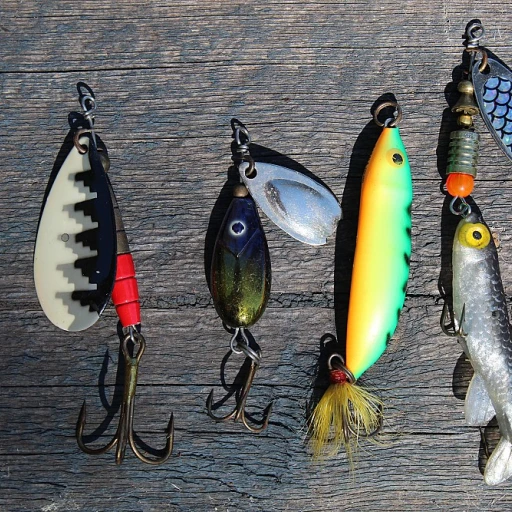
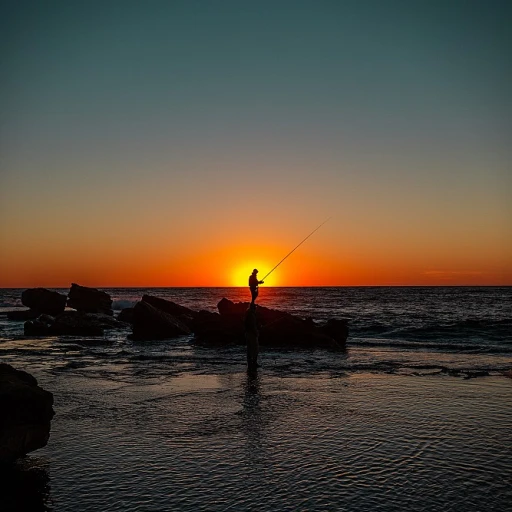
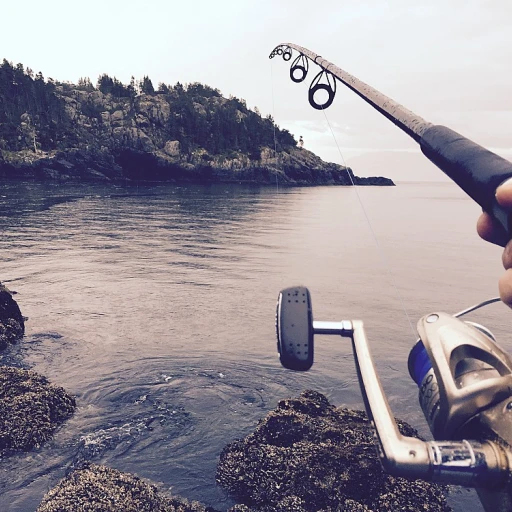
-large-teaser.webp)
